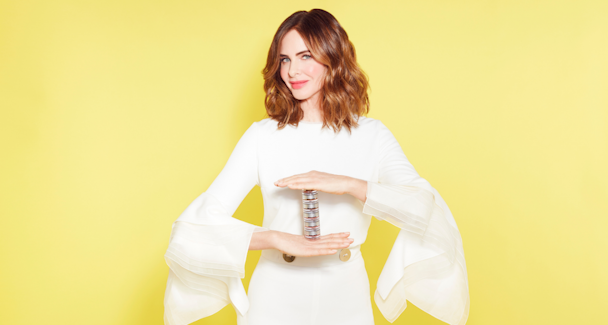The rise of the 50-plus influencer
The influencer landscape was for a long time the domain of millennials and gen Z. Adam Whyte, founder and chief exec of Edge, explains the time is now for brands to wake up to the opportunities of the new, older influencer landscape.

For a whole generation of women Trinny Woodall is fast becoming a new kind of beauty and style influencer
Lyn Slater and Trinny Woodall are at the forefront of a gathering wave of older women now building large communities on social media with their skincare and beauty advice. Elsewhere, other 50-plus influencers are making a big impact across lifestyle, fitness and fashion. This means the time is now for brands to tap into a host of new opportunities this shift in the influencer landscape is creating.
Until Covid-19, evidence was growing that a more inclusive influencer model – with an approach that actively integrates previously overlooked groups, such as influencers with disabilities – was overdue.
For too many years, the influencer landscape was the sole domain of millennials and gen Z. Then came the global pandemic.
With more people forced to spend time at home, there was a dramatic acceleration of the democratization of digital, which is one of the few positive outcomes from the past 18 months. And as this happened, a significant opportunity powered by people of all ages increased a desire to engage with digital media of all forms and functions, such as entertainment, educational and influencer content.
Today, many online experiences previously ‘owned’ by the young are now open to and enthusiastically accessed by all. Meanwhile, a whole group of gen Xs and baby boomers are smashing stereotypes and creating new models and engagement, particularly on YouTube.
Consider the music segment. Vlogging is becoming increasingly popular. Rick Beato, 57, has 1.7 million+ subscribers to his YouTube music channel, which is home to tips and tutorials and generates huge engagement and reach. Or Davina McCall, 53, who is currently challenging preconceptions around the menopause by encouraging greater openness and debate about this life stage’s hidden realities.
Along with Jo Elvin and Mariella Frostrup, who both have significant podcast and social media followings, these 50-plus creators are producing compelling content that appeals both to new tribes of older consumers and, increasingly, younger audiences too.
True cross-generational content is opening up influencer marketing dramatically and creating new, currently untapped opportunities for brands to target a segment that is both affluent and time rich in ways that can be both more relevant and authentic.
While 68% of over-55 consumers shop online every month, just 5% of advertising in the US is aimed at people over 50, according to recent research. Similarly, while baby boomers are over ten times wealthier than their millennial counterparts, all too often they are still the forgotten demographic. This makes no sense.
Nintendo was one of the first brands to recognize this when it launched the Wii and the DS back in the noughties.
With a strategy to broaden gaming to mainstream older audiences, Nintendo’s use of high-profile talents such as Helen Mirren and Sir Patrick Stewart in its marketing transformed the market. As a result, previously unidentified new types of gamer – women, families and older people in their 50s hooked on Brain Training – flocked to the brand, generating huge commercial growth.
Today’s modern-day equivalent is older influencers in beauty, such as ‘accidental icon’ Lyn Slater, 65, who is now re-imagining the beauty sector in a way that feels fresh and relevant, and heralding new beauty content partnerships. One of her many collaborations is with clean color beauty brand Ilia, which has made a name for itself as a champion of partnerships with influencers cutting across age demographics.
So the time is now for brands to wake up to the opportunities of the new influencer landscape.
Gen Xers were the trailblazers, they must not forget that – they were the ravers, the ladettes, the trendsetters of their day. And though now in their late 40s and early 50s, they still hunger to create and crave expression. And as clearly demonstrated by fiftysomethings J Lo and Monica Bellucci to Will Smith and Jay Z, they still have plenty of life yet.
Fifty-plus influencers still feel cool, but more than that, by eschewing vanilla, homogenized images of blandness, they are also credible and authentic. This is what makes the opportunity they represent for brands so exciting. So come on brand owners – challenge yourself not just to reset your notion of influencer marketing, but also the very definition of what makes an influencer.
In today’s landscape, influencing is absolutely the embodiment of the idea that age really is just a number.
Adam Whyte is founder and chief exec of Edge.
